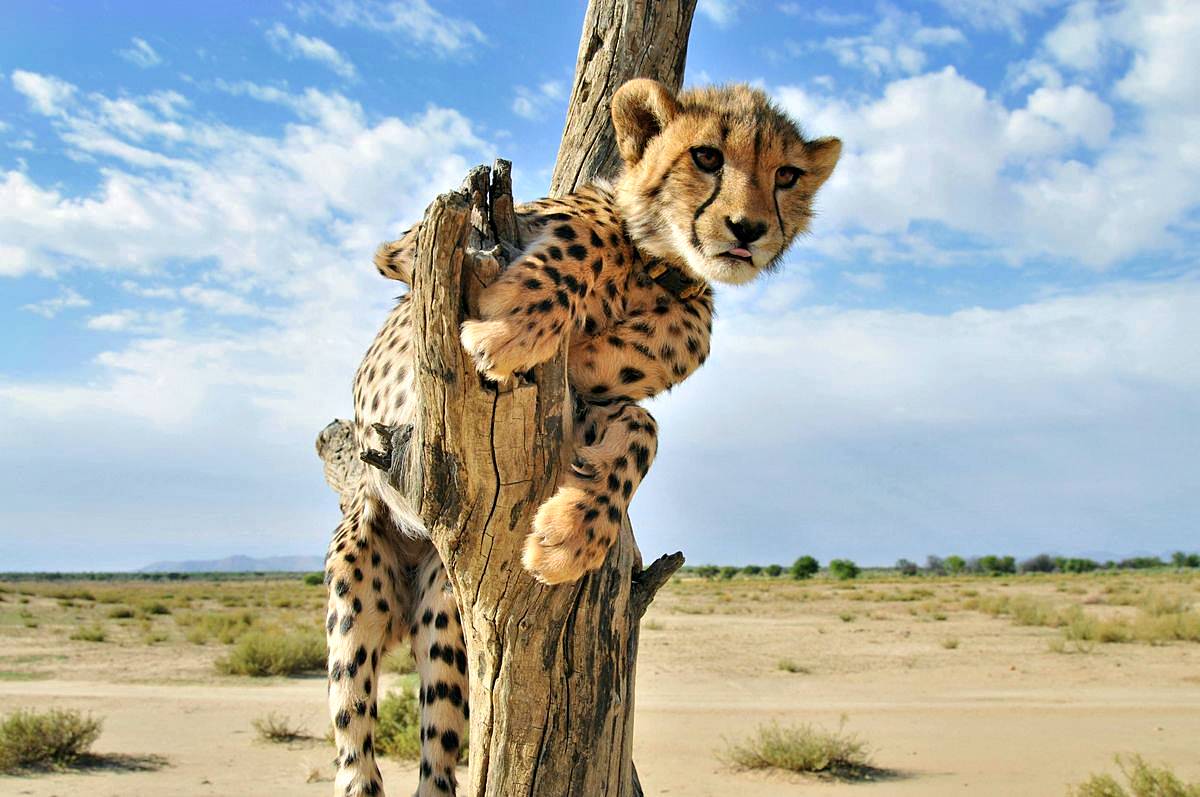🌍 A Unique Evolutionary Journey
Deep within the vast savannas of Africa, a remarkable feline has etched its name in the annals of nature’s marvels. The cheetah, with its sleek form and unparalleled speed, stands as a testament to the remarkable journey of evolution. Unlike its cousins, the lion and the tiger, this feline traces its roots back to the cat subfamily, making it more akin to the domestic feline we welcome into our homes. 🐱
The cheetah’s origins can be traced back to North America, where its ancestors roamed alongside the now-extinct American lion, some 6.7 million years ago. A daring pioneer among its kind ventured across the Bering Land Bridge, spreading its lineage across Asia, Europe, and Africa. It was on the vast African plains that the modern cheetah would eventually find its home, a land where it would face the challenges of coexisting with the native predators while carving out its own unique niche. 🌍
🏃♂️ The Need for Speed: Anatomy of a Feline Racehorse
To truly appreciate the cheetah’s prowess, one must delve into its physical attributes, meticulously sculpted by the forces of natural selection. Its streamlined body, with a small head, slender torso, and elongated limbs, is a masterpiece of aerodynamic design. Each element works in harmony to propel this feline sprinter across the open plains with breathtaking speed and agility. 🏃♂️
The cheetah’s acceleration from 0 to 100 kilometers per hour (62 mph) in a mere 3.4 seconds is a feat that would leave even the most formidable sports cars in its wake. Its top speed, a staggering 120 kilometers per hour (75 mph), is nearly three times faster than the world’s fastest human, Usain Bolt. This incredible velocity is achieved through a combination of powerful haunches, a flexible spine, and an intricate network of muscles that work in perfect synchrony. 🔥
🐏 The Eternal Chase: Pursuing the Elusive Prey
The cheetah’s prey of choice, the fleet-footed gazelle, presents a challenge worthy of its remarkable speed. With the ability to reach speeds of 80 to 90 kilometers per hour (50 to 56 mph), these graceful antelopes are among the few creatures on Earth that can outrun most predators. 🐏
However, the cheetah’s relentless pursuit is a spectacle that defies imagination. Its keen eyesight allows it to spot potential prey from miles away, prompting a stealthy approach until the prey is within striking distance. Once detected, the cheetah unleashes its full potential, launching into a furious sprint that leaves both predator and prey a blur on the savanna’s canvas. 🏜️
The chase is a dance of agility and strategy, with the gazelle employing evasive maneuvers and sudden turns in a desperate attempt to shake off its pursuer. Yet, the cheetah’s remarkable balance, aided by its long tail acting as a counterweight, allows it to navigate these twists and turns with incredible precision. 🔄
🦅 Adversity and Resilience: Battling for Survival
Despite its prowess as a hunter, the cheetah’s journey is fraught with adversity. Its slender build and relatively small stature render it vulnerable to larger predators, such as lions and hyenas, who view the cheetah’s offspring as potential rivals and prey upon them relentlessly. 🦁
Moreover, the cheetah’s solitary lifestyle and the demands of its high-speed pursuits leave it susceptible to theft by opportunistic scavengers. Vultures and wild dogs, alerted by the commotion of the chase, often swoop in to claim the hard-earned prize, leaving the exhausted cheetah with little recourse but to retreat. 🐕
Yet, the cheetah’s resilience shines through in its unique adaptations. The distinctive coloration of its cubs, resembling the patterns of the harmless plover bird, provides camouflage from aerial predators. Additionally, the formation of coalitions among male cheetahs allows for cooperative hunting and defense against potential threats, showcasing the species’ remarkable adaptability. 🧡
🧬 The Genetic Riddle: Thriving Against the Odds
Perhaps the most intriguing aspect of the cheetah’s story lies in its genetics. Genetic analyses have revealed an astonishing lack of diversity among cheetah populations worldwide, suggesting that the species narrowly escaped extinction in the past. 🧬
This genetic bottleneck, which typically leads to inbreeding depression and eventual extinction, defies conventional wisdom. Yet, the cheetah has not only survived but thrived, once numbering in the hundreds of thousands across Asia and Africa before human intervention threatened its existence. 🌍
The secret to the cheetah’s success may lie in the delicate balance between the harmful effects of inbreeding and the preservation of advantageous traits. While some inconsequential defects may have arisen, the cheetah’s core attributes – its speed, agility, and hunting prowess – have remained largely uncompromised, allowing it to excel in its ecological niche. 🏆
🌳 Conservation Challenges and Hopes for the Future
As with many iconic species, the cheetah’s survival faces numerous challenges in the modern world. Habitat loss, conflict with humans, and dwindling prey populations have conspired to reduce its numbers to a mere 6,500 individuals in the wild, primarily concentrated in Africa. 🌍
However, the cheetah’s remarkable story serves as a rallying cry for conservation efforts worldwide. Through initiatives aimed at preserving its natural habitats, mitigating human-wildlife conflicts, and bolstering prey populations, there is hope that this magnificent feline will continue to grace the savannas for generations to come. 🌳
The cheetah’s story is a testament to the resilience of life and the intricate dance of evolution. Its remarkable speed, agility, and adaptability have etched its place in the annals of nature’s marvels, serving as a reminder of the wonders that still await our discovery and protection. 🌍
Copyright © 2025 Hea1th.net

